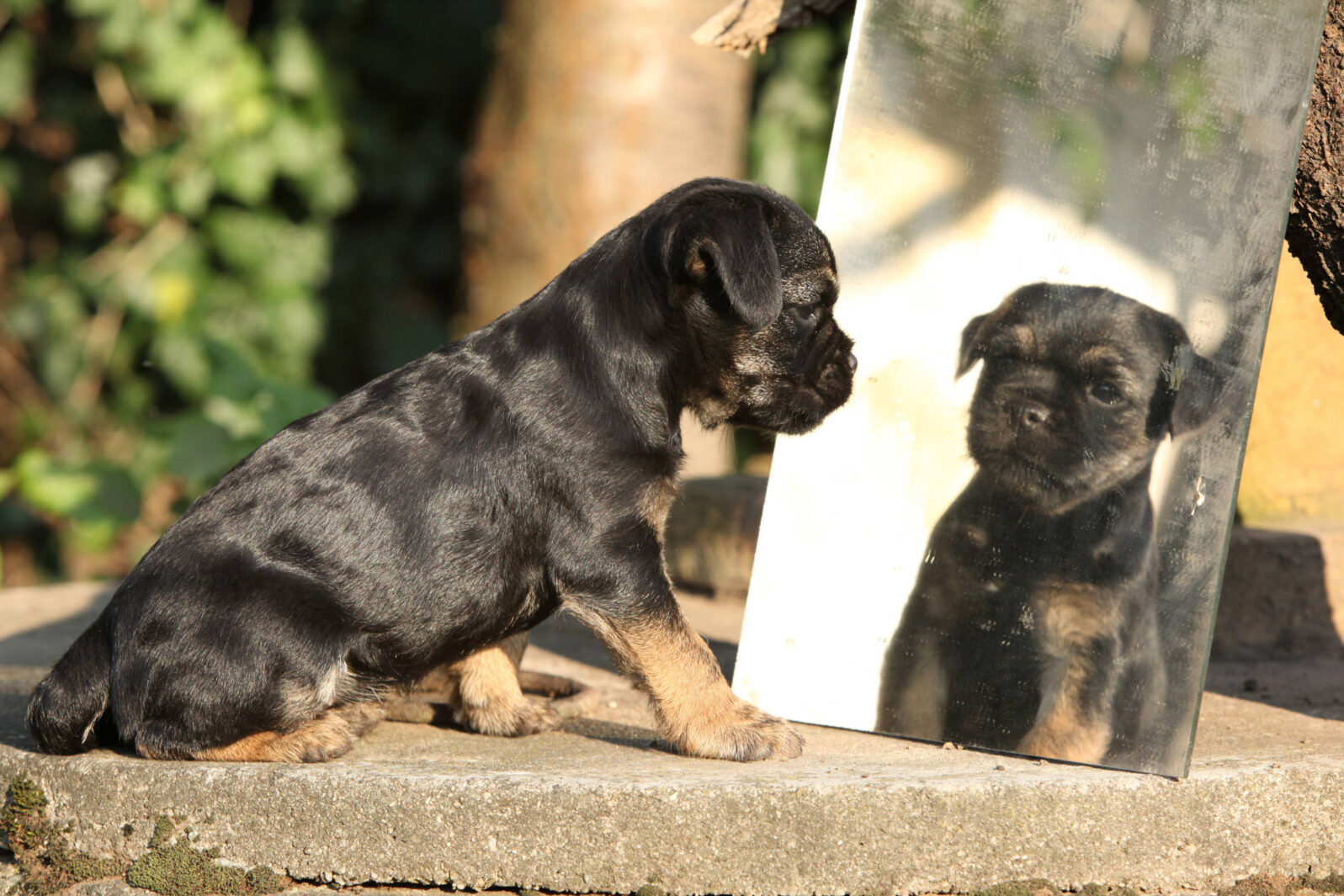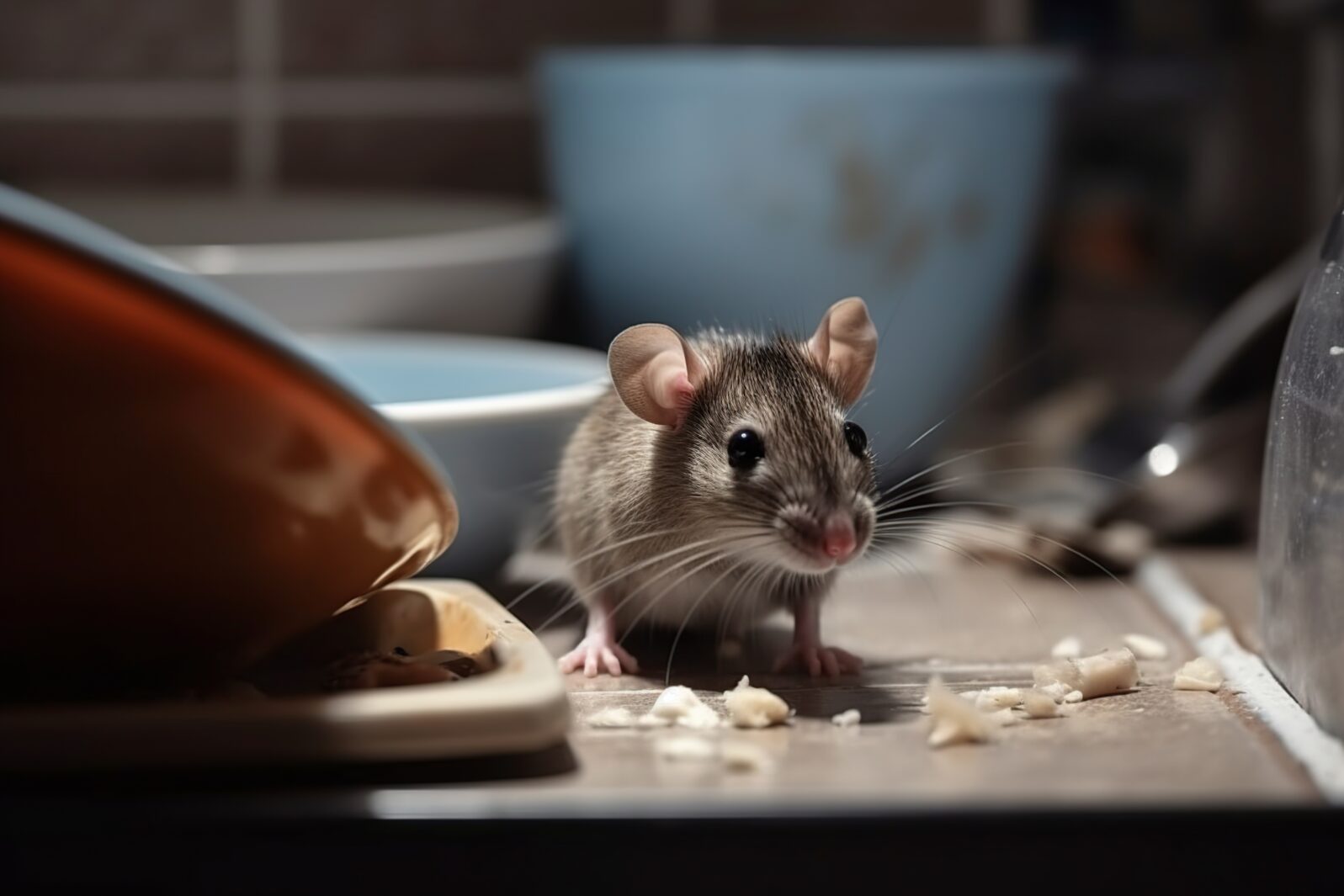Mice Pass the Mirror Test — Not a Self-Knowledge Test
Whether an animal recognizes its own image surely has less to do with self-awareness than with the role that sight — as a sense — plays in its lifeResearchers reported this week in the journal Neuron that mice have passed the famous “mirror test” — recognizing themselves in a mirror — though only under certain conditions:
Researchers report December 5 in the journal Neuron that mice display behavior that resembles self-recognition when they see themselves in the mirror. When the researchers marked the foreheads of black-furred mice with a spot of white ink, the mice spent more time grooming their heads in front of the mirror — presumably to try and wash away the ink spot. However, the mice only showed this self-recognition-like behavior if they were already accustomed to mirrors, if they had socialized with other mice who looked like them, and if the ink spot was relatively large.
Cell Press. “Mice pass the mirror test, a classic indicator of self-recognition.” ScienceDaily. ScienceDaily, 5 December 2023. The paper is open access.
For a refreshing change, the authors do not jump to lavish conclusions about what they have found:
Though the mirror test was originally developed to test consciousness in different species, the authors note that their experiments only show that mice can detect a change in their own appearance, but this does not necessarily mean that they are “self-aware.”
Cell Press. “Mice pass …”
Well, if it did mean that mice are self-aware, then the fish and ants that have passed the test are also self-aware, a claim supported by no other data or experience. Unless we change the meaning of “self-awareness,” of course. Also, getting them to access the information a mirror provides was not easy:
“The mice required significant external sensory cues to pass the mirror test — we have to put a lot of ink on their heads, and then the tactile stimulus coming from the ink somehow enables the animal to detect the ink on their heads via a mirror reflection,” says first author Jun Yokose of University of Texas Southwestern Medical Center. “Chimps and humans don’t need any of that extra sensory stimulus.”
Cell Press. “Mice pass …”
Quick success with chimps and humans is probably due to the fact that they actually are self-aware, within a conventional meaning of the word. Many other life forms can learn to identify an image, possibly of themselves, for a reward or advantage. We should be slow to conclude, on that basis alone, that they have an inner personal life.

It’s worth recalling that the test was first developed for chimpanzees, whose responses can be physically compared in a number of ways to those of humans. And, not surprisingly, chimps passed. But, as science philosopher Stephen Fleischfresser noted when a fish passed the test, drawing conclusions becomes “less and less justified the further one moves from apes and humans, with certainty decreasing as ‘taxonomic distance increases between the test species and the primate taxa for which the test was initially designed.’” The fact that so few dogs pass should at least warn us that we should be asking, how would a given type of animal usually recognize self or others? In the case of dogs, smell may be more important than sight.
Wisely restricting the scope of their inquiry to what the physical evidence shows, the team has identified something useful: “a subset of neurons in the hippocampus that are involved in developing and storing this visual self-image.” That, they say, offers “a first glimpse of the neural mechanisms behind self-recognition.” A body of knowledge of such mechanisms could play a role one day in assessing outcomes of brain damage.
You may also wish to read: The mirror test: the key to a sense of self? When fish and ants pass the test for “a higher sense of self” — but dogs and even kids in some cultures — don’t, we should ask some questions. Neuroscientists may be drawing the wrong conclusions from the findings.
